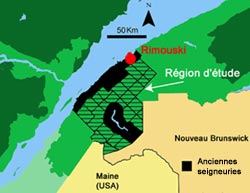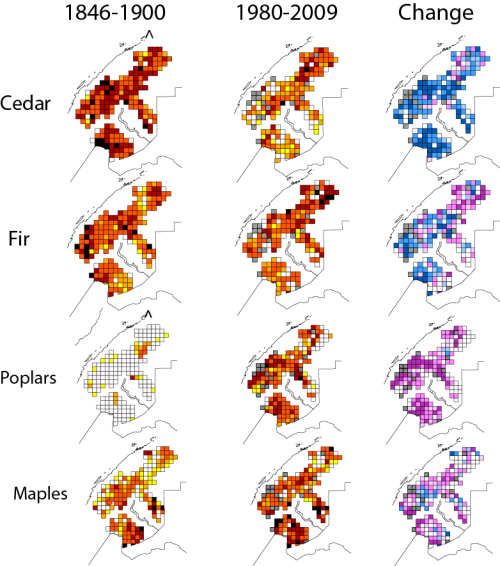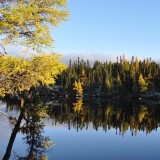Presettlement forest composition from early land survey records in eastern Québec, Sébastien Dupuis M. Sc.
 A better understanding of pre-industrial forests could guide sustainable development objectives and helps maintain forest biodiversity. The objective of this research was to describe the composition of the pre-industrial forest in the Lower St. Lawrence region in eastern Quebec, from trees listed in the early survey records of public lands, which date back to the nineteenth century. These results were compared with recent forest inventories to quantify changes in forest composition.
A better understanding of pre-industrial forests could guide sustainable development objectives and helps maintain forest biodiversity. The objective of this research was to describe the composition of the pre-industrial forest in the Lower St. Lawrence region in eastern Quebec, from trees listed in the early survey records of public lands, which date back to the nineteenth century. These results were compared with recent forest inventories to quantify changes in forest composition.
Conifers dominated the pre-industrial forest. White cedar (Thuja occidentalis L.), balsam fir (Abies balsamea (L.) Mill.) and spruces (Picea spp.) were the most dominant taxa. Deciduous trees were less frequent and less dominant than conifers. Maples, especially sugar maple (Acer saccharum Marsh.), were more dominant towards high altitudes. Pines (Pinus spp.) and poplars (Populus spp.) were rare.
Comparisons with recent forest inventories (1980-2009) show an increase of hardwood taxa at the expense of conifers. Poplars, maples, and birch are much more common today. Cedar has suffered the greatest decline in dominance, followed by spruce and fir. These differences are most likely due to logging and settlement fires in the early twentieth century. These results suggest management targets based on natural forest conditions.



